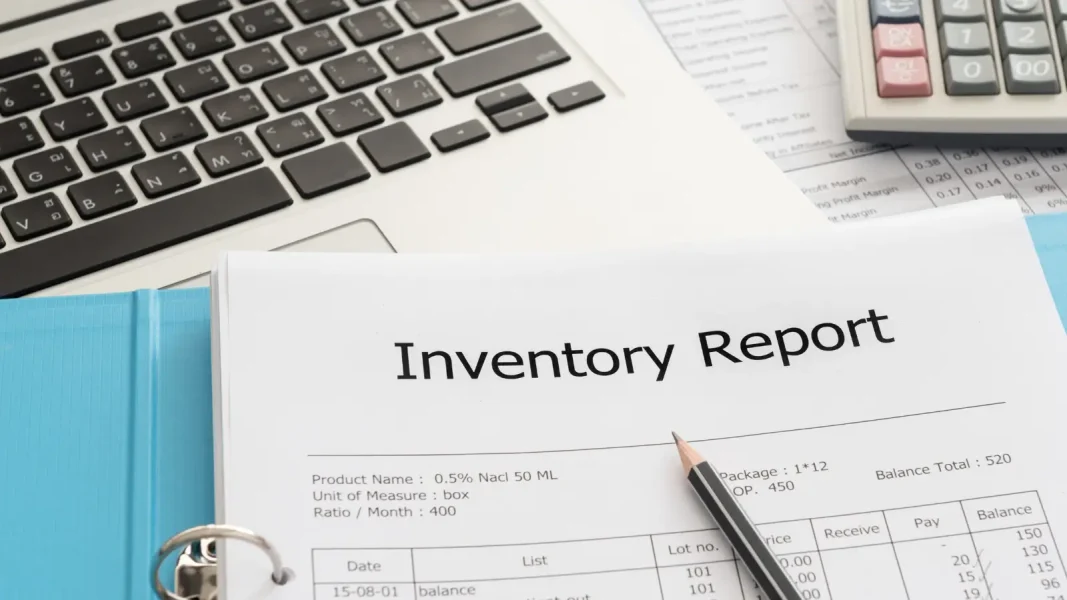In today’s fast-paced business landscape, characterized by shrinking time-to-market and rapidly evolving product life cycles, companies face immense pressure to maintain their competitiveness.
To thrive in this environment, organizations must invest substantial efforts in staying ahead.
Key to their success is the ability to generate precise demand forecasting through sophisticated analysis and access to real-time data on purchasing trends and market conditions.
In this article, delve into the essential aspects of demand forecasting, including its fundamentals, advantages, various forecasting techniques and reliable methods to measure its effectiveness.
Fundamentals of Demand Forecasting
Demand forecasting is a process used to estimate the future demand for a product or service. It involves analyzing historical data, market trends, customer behavior and other relevant factors to predict the quantity of goods or services that customers are likely to purchase in a given period.
High-quality analytics provide accurate figures to rely on when making any commercial decision: how much inventory to purchase, how much warehouse space to rent, which suppliers to work with, and how to retain customers. It assists retailers in positioning and displaying their assortments correctly, while internet platforms can use it to better tailor personalized offers and adjust advertising.
Even with minimal analysis of past sales, factors influencing demand can be identified and either modified or adapted to. It is important to explore not only the raw sales figures but also the accompanying factors such as seasonality, ongoing promotions, and external circumstances.
For example, during the pandemic, there were several predictable spikes in demand for certain product categories like hand sanitizers, toilet paper, and canned goods. However, to track such trends, forecasting needs to be conducted in real-time.
Benefits of Understanding Demand Forecasting
Effective resource planning
By accurately predicting future demand, businesses can plan their resources accordingly. This includes determining production levels, inventory management, raw material procurement, and workforce scheduling. This way, businesses can proactively prevent shortages or surpluses, leading to optimized resource allocation and cost reduction.
Improved inventory management
Demand forecasting enables businesses to maintain optimal inventory levels. By forecasting demand patterns, they can determine the right quantity of products to keep in stock. This prevents overstocking, which ties up capital and incurs storage costs, as well as understocking, which leads to lost sales and dissatisfied customers.
Effective pricing strategies
Demand forecasting helps businesses make informed decisions to optimize their profits by adjusting prices accordingly based on anticipated demand levels. Moreover, forecasting empowers businesses to strategically plan promotions and discounts, enticing customers during periods of low demand. This proactive approach ensures that businesses can effectively manage their resources and maintain a competitive edge in the market.
Supply chain optimization
Furthermore, demand forecasting plays a vital role in supply chain management. By accurately predicting demand, businesses can collaborate effectively with suppliers, ensuring the availability of raw materials and components at the right time. This minimizes supply chain disruptions, reduces lead times, and improves overall supply chain efficiency.
Demand forecasting, when done right, can bring lots of benefits to the business from reduced costs to increased customer satisfaction.
Demand Forecasting Techniques
Demand forecasting is a multifaceted process that encompasses the utilization of various techniques to accurately predict consumer demand for a particular product or service.
Let’s discuss these techniques and explore them in more detail:
Time Series Analysis
Time series analysis is a key technique in AI-powered demand forecasting, especially in retail. By studying historical sales data, we can identify recurring patterns, seasonal trends, and potential anomalies. Common statistical models used in this process include moving averages, exponential smoothing, and ARIMA (AutoRegressive Integrated Moving Average). These models help predict future demand based on the data’s past behavior.
While time series forecasting aims to project what might happen, it’s not always 100% accurate. External factors, such as market shifts or sudden economic changes, can impact predictions. However, the more historical data available, the more reliable the forecast becomes. Time series analysis helps uncover the “why” behind trends—whether it’s seasonal peaks or unexpected sales drops.
The distinction between forecasting and prediction lies in their specific focus. Forecasting often relates to making projections at specific points in time, while prediction generally refers to future trends. In retail, time series analysis allows businesses to make informed, data-driven decisions, helping them prepare for future demand fluctuations and optimize supply chain management accordingly.
Market Research
Market research in demand forecasting leverages customer surveys to gather insights directly from consumers. This approach helps identify trends in customer buying behaviors and preferences by analyzing feedback on what customers value in products and services, including pricing and location preferences.
Conducting these surveys can be done continuously or during specific periods of intensive research. The data collected, including demographic details, not only aids in forecasting future demands but also enhances targeted marketing strategies. This method is particularly beneficial for new companies seeking to understand their customer base better.
To ensure accuracy, it’s crucial that the surveys reflect a random yet representative sample of the potential customer base. This helps in making reliable predictions about buying trends and service demands. New businesses find this method invaluable as it provides deep insights that are not visible through internal sales data alone.
By integrating market research into your demand forecasting strategy, you gain a comprehensive view of your current and potential customers, helping to maximize profits by aligning your offerings more closely with market needs.
Regression Analysis
Regression analysis is a statistical tool used to understand how various factors like pricing, promotions, and economic conditions impact product demand. This technique delves into the relationships between these variables, offering insights that are crucial for precise demand forecasting.
For small businesses, regression analysis is particularly valuable. It helps pinpoint which factors significantly affect sales, which can be overlooked, and how these elements interact. By analyzing data trends and statistics, businesses can make informed decisions to enhance their sales strategies in both the short and long term.
Furthermore, this analysis aids in estimating future sales, managing inventory levels, and understanding market dynamics like supply and demand. It also explores how different variables influence each other, providing a comprehensive view of the market forces at play.
Using regression analysis, companies gain a deeper, quantifiable understanding of what drives their sales, enabling them to adjust their strategies effectively to maximize profits.
Delphi Method
The Delphi method is a structured, iterative forecasting technique used widely across various industries, including defense and healthcare. This method relies on the insights of a panel of experts, who provide their forecasts on specific topics through successive rounds of questionnaires.
Initially, a facilitator selects experts based on their relevance to the subject matter and distributes questionnaires. Experts respond based on their knowledge and experience. These responses are compiled and summarized by the facilitator, who then shares a summary report with all participants. This report helps experts see others’ viewpoints and reconsider their own in light of collective feedback.
Experts complete another round of questionnaires, refining their forecasts with each iteration. This process repeats until a consensus is reached among all experts, indicating a reliable forecast.
The Delphi method’s strength lies in its ability to gather diverse expert opinions and gradually converge on a common understanding or forecast, minimizing individual biases and enhancing the accuracy of predictions.
Machine Learning and Artificial Intelligence (AI)
Machine learning algorithms, such as neural networks, random forests, and support vector machines, can be employed to analyze large volumes of data and identify complex patterns and correlations. These techniques can capture non-linear relationships and make accurate demand forecasts based on diverse data sources.
On this basis, Optimix offers a demand forecasting solution – XFR, Forecast and Replenishment. Based on artificial intelligence, it relies on sophisticated sales history correction to achieve accurate sales forecasts. The solution enables the evaluation of impacts related to stockouts, promotions, exceptional sales, and specific events in order to predict normal demand.
Discuss with our Supply Chain experts and discover how we can assist you in maximizing your profits and staying competitive in your market!
Measuring the Effectiveness of Demand Forecasting
Measuring the effectiveness of demand forecasting is a crucial aspect of the process as it ensures the efficacy of strategies and techniques while maximizing profits. Various methods can be employed to measure the effectiveness of demand forecasting, including analyzing sales data, customer feedback, and market trends.
- Analyzing sales data entails examining sales figures over time and comparing them across different product lines. By doing so, patterns and trends that could impact sales can be identified.
- In addition to analyzing sales data, customer feedback serves as a valuable tool for evaluating the effectiveness of demand forecasting. Surveys and interviews can be conducted with customers to get insights into their preferences and decision-making processes. This helps in pinpointing potential issues or areas for improvement in the forecasting strategy.
- Lastly, market trends play a significant role in assessing the effectiveness. By monitoring how the market is evolving and analyzing how other businesses are adapting to these changes, potential opportunities and threats that might impact demand forecasting can be identified.
----------------------------
Demand forecasting is a powerful tool that can help businesses maximize profits and make informed decisions that affect everything from inventory planning to supply chain optimization. With the right understanding, strategies, and techniques, businesses can make informed decisions and take advantage of opportunities in the marketplace.
If you’re looking to streamline this process and enhance its effectiveness to help you improve demand forecasting, learn more about how our solution XFR helps you replenish stock and deliver the experience that customers want.



